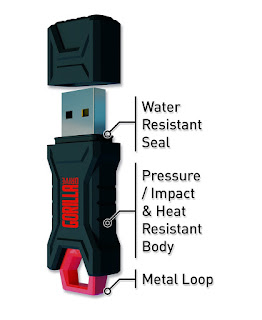By Tim Gamble
Join the Resistance! Subscribe by email (click this link)
Part 1 was posted yesterday, and is a general introduction to encryption for the non-techie.
--The following information is specifically for Windows systems--
Encryption Software
There is a lot of encryption software out there, much of it you have to buy. For years, I used Rohos software, which has both a paid and free version. The free version has less bells and whistles and you are limited, last time I checked, to two gigabytes of encryption (which actually should be plenty for most folks). Rohos worked very well for me, and it does let you create a hidden partition to hide your encrypted data (but that is not really necessary, in my opinion). I haven't used Rohos in years, so things may have changed.
An Easy, Free Alternative
I eventually discovered that 7-Zip archive software allows for password-protected full AES-256 encryption. That is one of the encryption standards that I mentioned in Part 1. All that you really need to know is that it is considered one of the absolute best.
Archive software, such as 7-Zip, is used to compress, or zip-up, files (and extract them later) in order to save memory space. Using 7-Zip to create and password protect encrypted files is easy, even for non-techies. Simply follow these steps:
1- If you don't already have 7-Zip, you can download and install it on your computer. You can get it at Major Geeks (a software site that I have used for years and trust). Go to https://www.majorgeeks.com/files/details/7_zip.html to get it. Again, it is free.
2- Once it is installed, navigate to the folder containing the files and folders that you want to encrypt. Select the files and folders that you want to encrypt, perform a right-click on them, click 7-Zip from the menu, and then click the "Add to archive" option. This works on your Windows-based desktop, laptop, or any USB key (memory stick). 7-Zip compresses and encrypts all files within any folder you select. I simply keep most of my sensitive files in the same folder, using sub-folders to organize the files, and encrypt/decrypt that folder as needed.
3- At the Add to Archive dialog box, you can either choose the default name in the top box, or type in a new name for the folder or file, and choose the destination for the encrypted file (the ... button to the right of the top line). Make sure the Archive format (next box down) is set to 7z or zip.
 |
| Note: Your "Add to Archive" box may look slightly different depending on your particular version. |
5- You have now created an encrypted file. At this point, you may want to delete/shred the original folder and start using the encrypted folder exclusively (make sure the password for the encrypted folder works first, of course). You may move this encrypted file around, place it on a USB key, make back-up copies of it, or whatever you want to do.
6- To open and use the encrypted files, just right click the encrypted file, select 7-Zip, select Open archive, and the 7-Zip file manager will pop up, and use it to open the encrypted file with your password by choosing the file/folder you want, clicking on Extract (green dash), clicking Okay, then entering your password.
 |
| Note: Your box may look slightly different depending on your particular version |
--------------------
AD: I use and highly recommend GorillaDrive USB Flash Drives. They are designed to be pressure / impact resistant (up to 250 psi), heat resistant (up to 225 degrees F), and water resistant (up to 65 feet). Although they list freeze resistance at 32 degrees F, one of mine did survive outside overnight in below freezing weather (mid 20s), when I accidentally left it on top of my vehicle. I've been using Gorilla Drives for 10 years and have never had one fail.

No comments:
Post a Comment
Comments are posted without moderation. Use caution when following links, and beware of SPAM and fake links. Please keep discussions civil and on-topic.